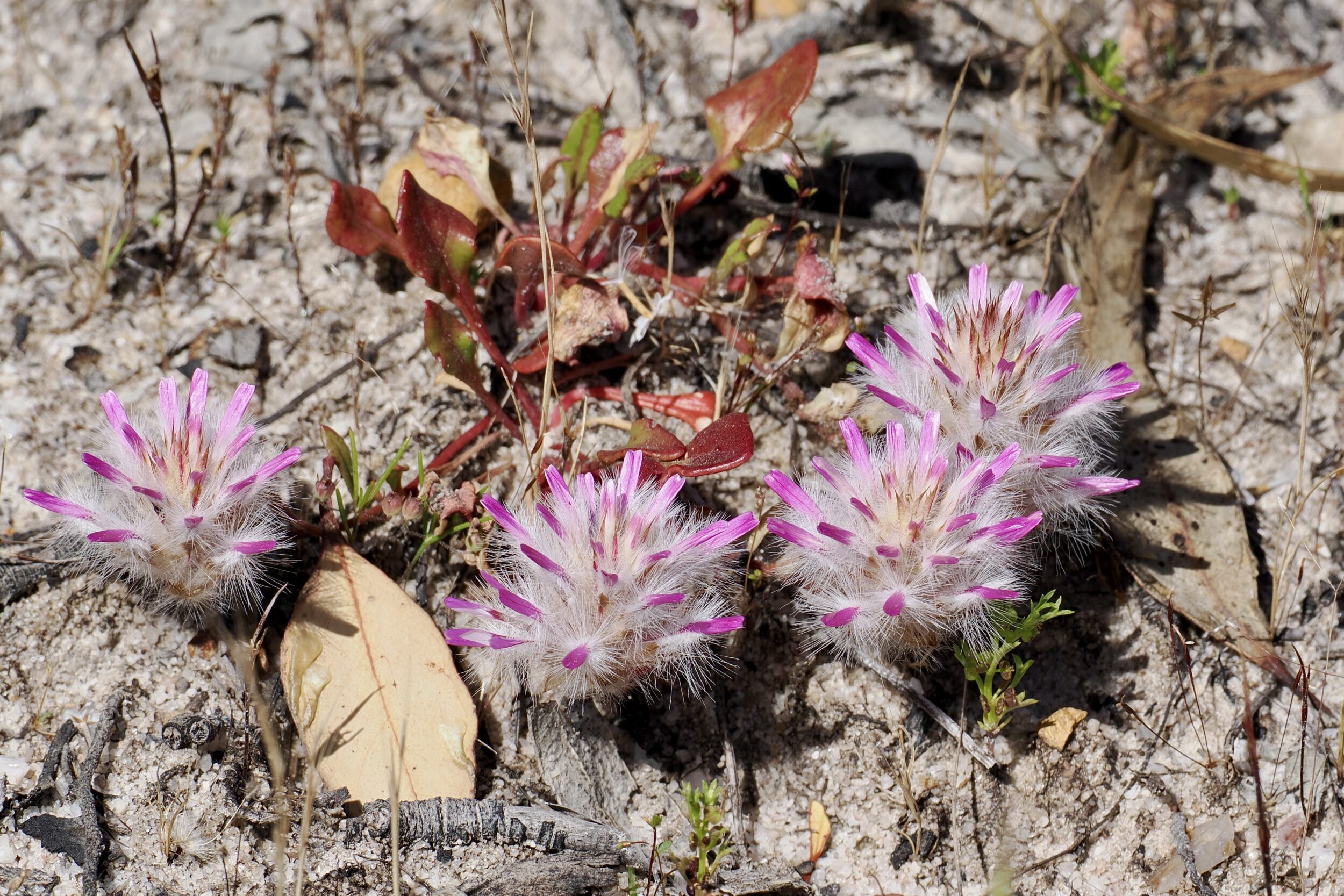If you browse the internet, looking for “mulla mulla”, you soon realise that many Australians mistakenly think that Ptilotus exaltatus is the only such species.
Ptilotus exaltatus – commonly known as “pink mulla mulla” – is likely the best-known; it is notably tall/large, and has probably the widest range, naturally occurring in “poor” soil in not-very-wet places, across much of the Australian continent.
It is, however, far from the only kind of mulla mulla.
Ptilotus exaltatus is not even the only kind of pink mulla mulla.
This post’s pink-tipped hero – Ptilotus manglesii – is more petite, and its blooms are usually ground-huggers.
Arguably, Ptilotus manglesii is even more beautiful than its “exalted” cousin.
Its natural range is within WA’s southwest, only.
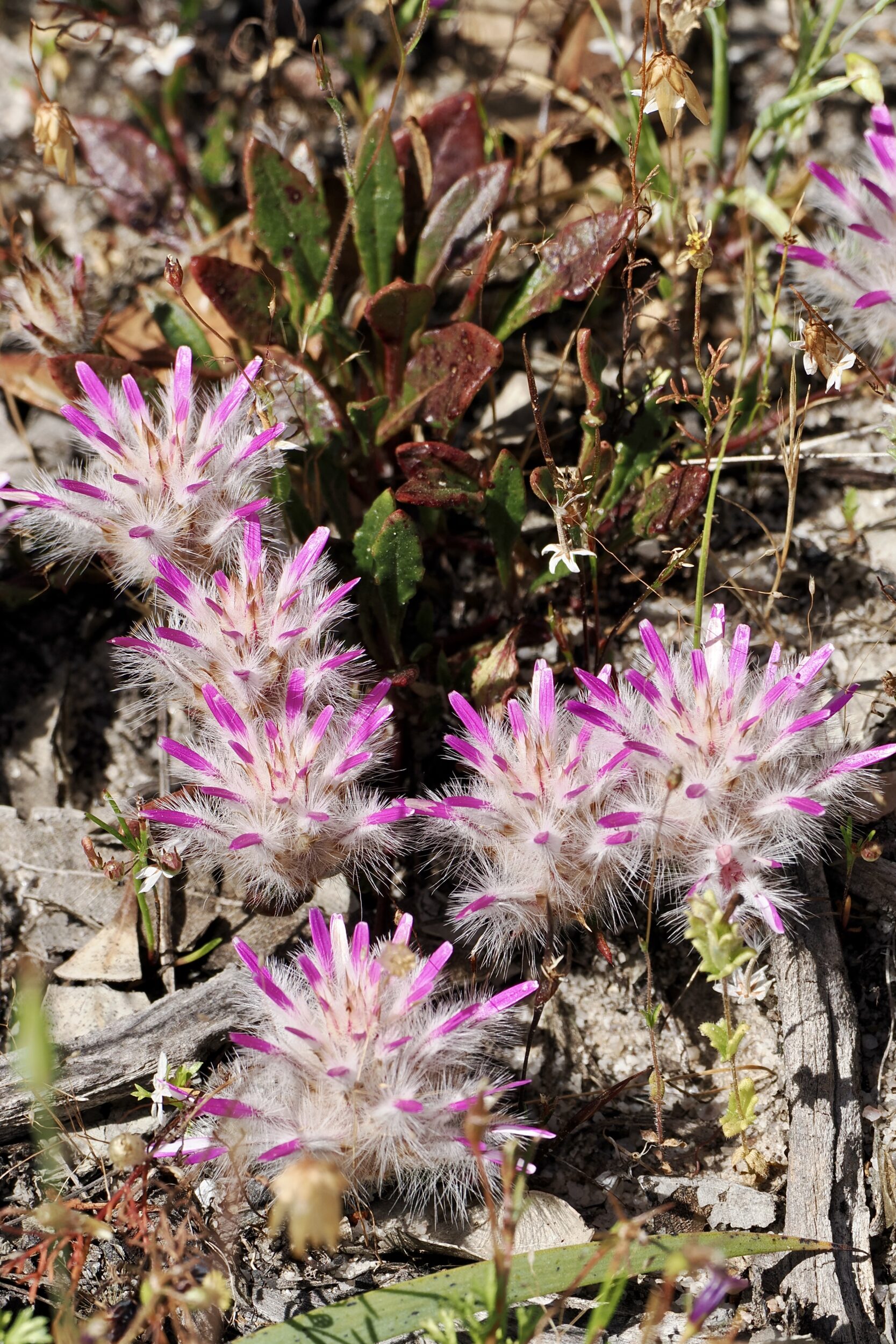
Every mulla mulla is a member of Ptilotus – a genus of circa 120 species, all of which call the Australian continent home; one of them also occurs in Tasmania. Another has crossed a bit of Indian Ocean, and now also grows on Timor and a few adjacent islands.
By far the largest portion are species which naturally occur in Western Australia, only.
This post’s mulla mullas are commonly known as “pom poms”, or as “rose-tipped mulla mulla”.
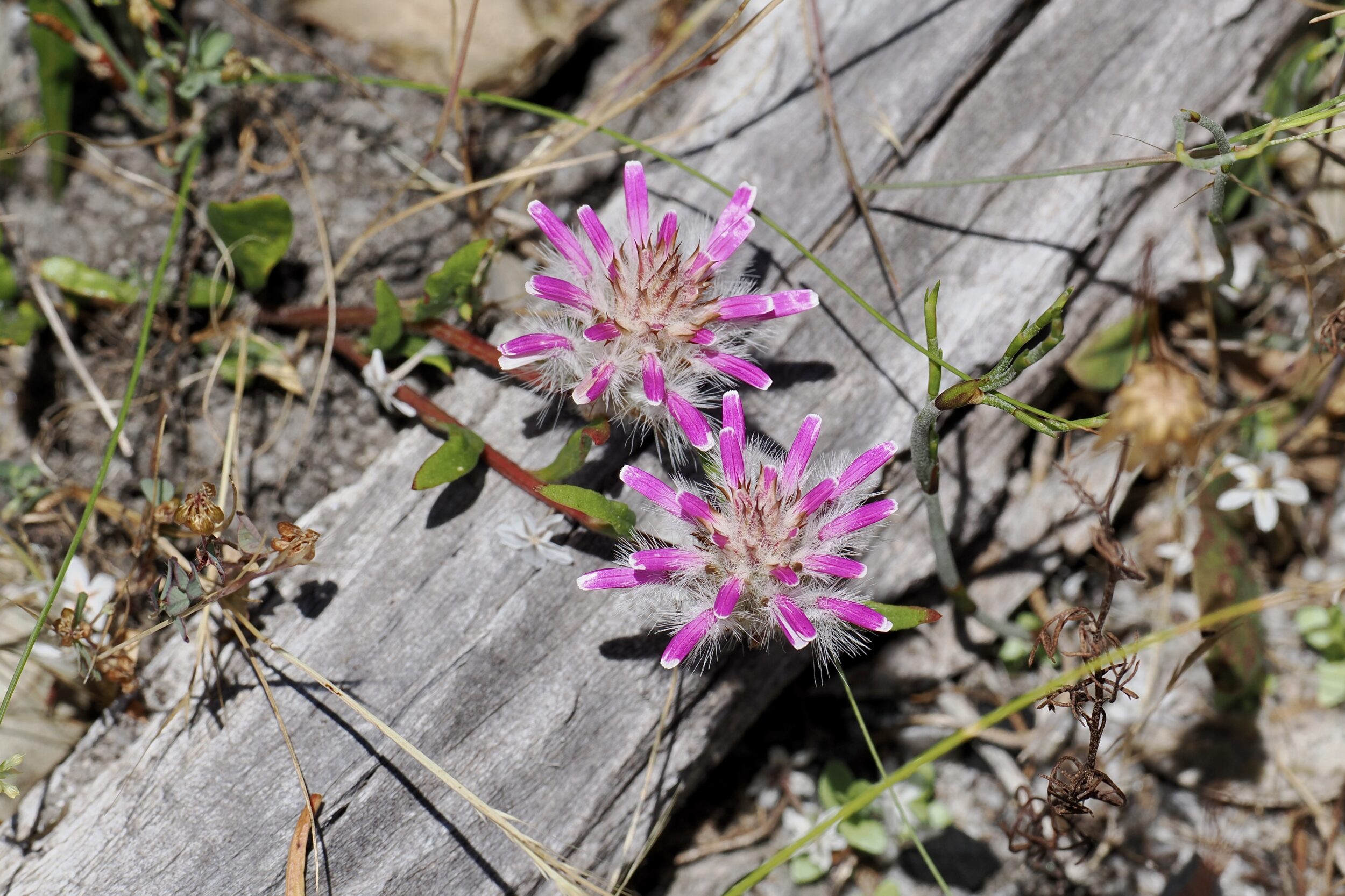
Photographic footnote
As is true of almost every image in this series, I deployed a longer lens than most people choose for flower photography.
In 35 mm (“normal”) camera terms, it is a 400 mm telephoto.
This, perforce, means I am standing further away from my target than are flower-photographers who choose a shorter lens, whether “macro” or standard.
I often find this “disadvantage” to be an advantage; my own shadow is less likely to prove problematic, and I am less likely to scare away interesting insects or arachnids.
Also, I find the long lens helpful, compositionally.
If the light is “good”, a long lens gives me a considerable range of “depth of field/focus” options.
”Wide open” at f 2.8, the depth of focus, will be very narrow, especially if I move in as close as “sharp focus on subject” will allow.
As I narrow the aperture (it’s f 7.1 & f 9.1 in the two images below) the focus field expands…more so, if I stand a little further away
Often, I focus manually.
if you have a good/sharp long lens, I’d urge you to try it out on flora; it can work very well, provided light is good and wind is gentle or absent.
The general “rule”/fashion in flower photography: “isolate your subject from the “distracting” background”.
If the flower is well clear of the ground this is easily achieved by having the lens “wide open” and thereby minimising focus depth. Generally, you should use manual focus and “target” it on your key target.
However, if the relevant flower is a ground-hugger, “isolating it” is likely to prove impossible…and oft-undesirable, anyway.
“The full context” is quite often more beautiful/interesting than would be “the flower alone, apart from some soft bokeh”. This can be true, even of an “easy-to-isolate” flower.
In the case of this post, I absolutely did not want to “throw out of focus” the ground on which the pom poms grew, or the richly-textured wood behind a flower, or the leaf below it.
Whenever photographing flowers (or anything) the question to ask yourself, always, “is how do I best serve what I am looking at, right now, in this particular instance?”
it is a good idea to forget fashions, to try more than one approach, to keep a very close eye on exactly how/where light and shade are playing, and – most importantly – to keep moving.
Often, moving even a few millimetres up, down, left, right, closer, or further away can make a monumental difference.
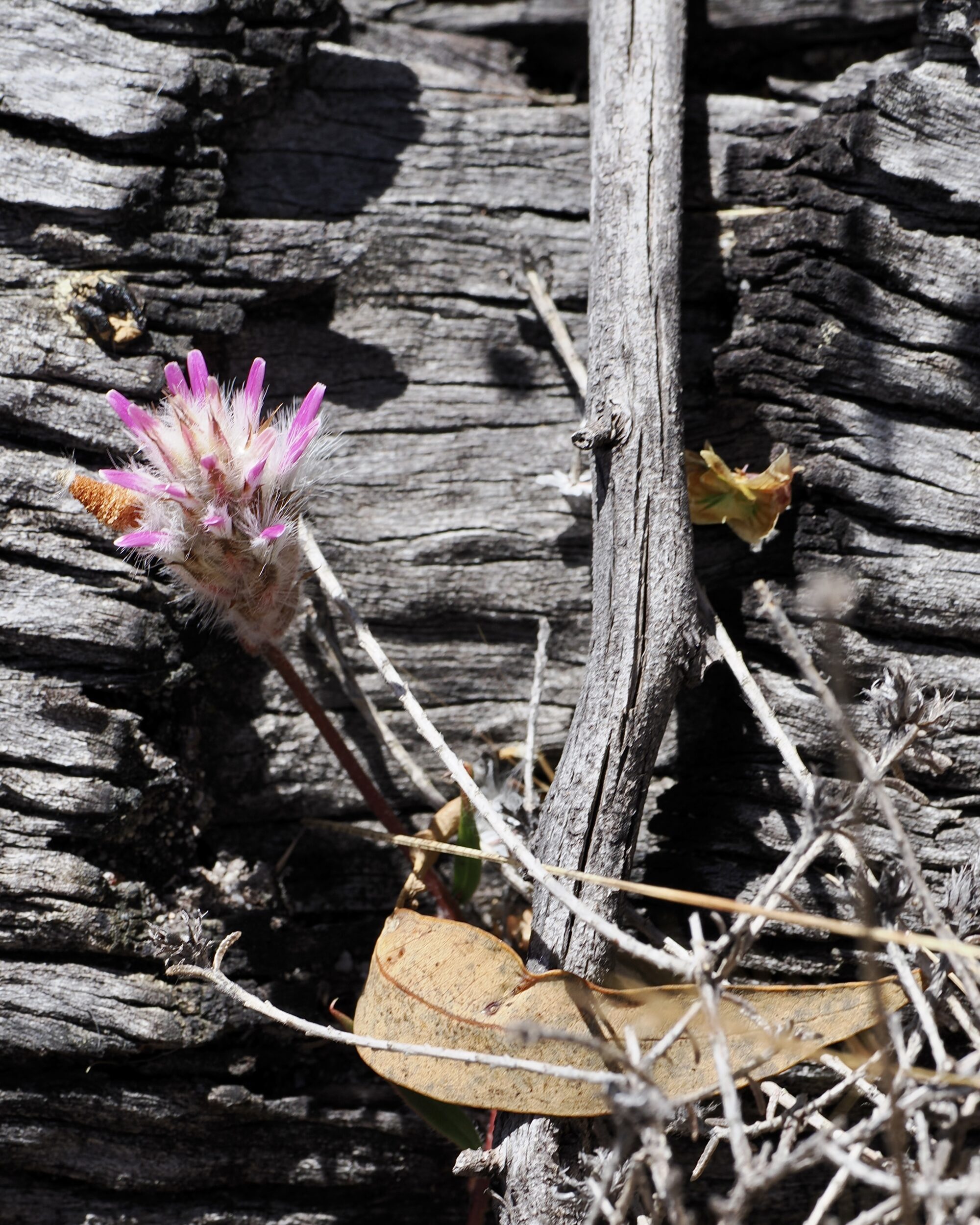
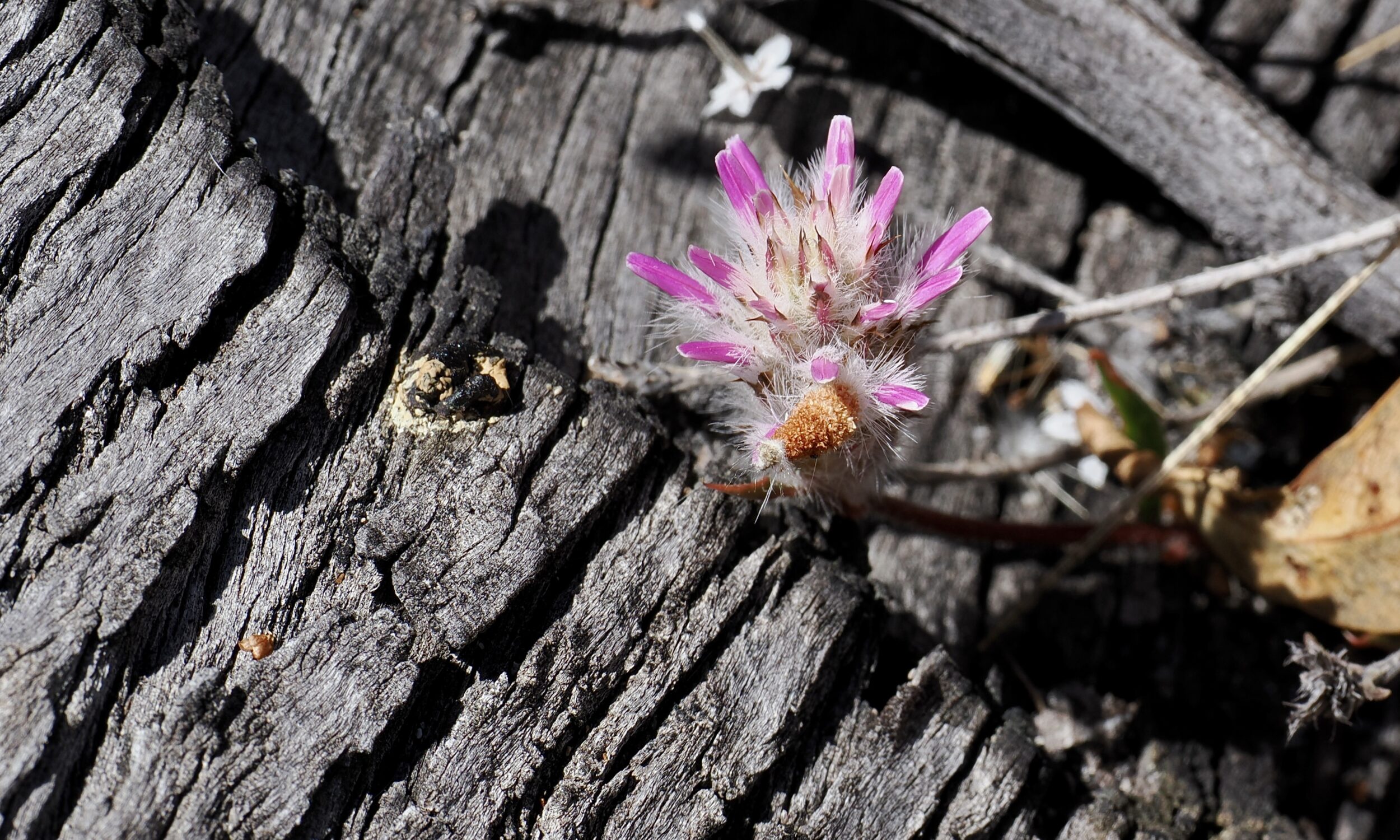
A much more skilled nature photographer than yours truly – the Albany-based Georgina Steytler – has recently published her second book.
Her first is the best general, photographic celebration of Australian birds that I have seen.
Substitute “flora” for “birds”, and the same description applies to her new book.
Both are reasonably priced, the printing quality is excellent (unlike so many photography books, which are let down by lurid hyper-saturation), and her text is a hoot.
For the Love of Flora is now in bookshops, and can also be purchased online, here.
Georgina Steytler has an excellent website.
